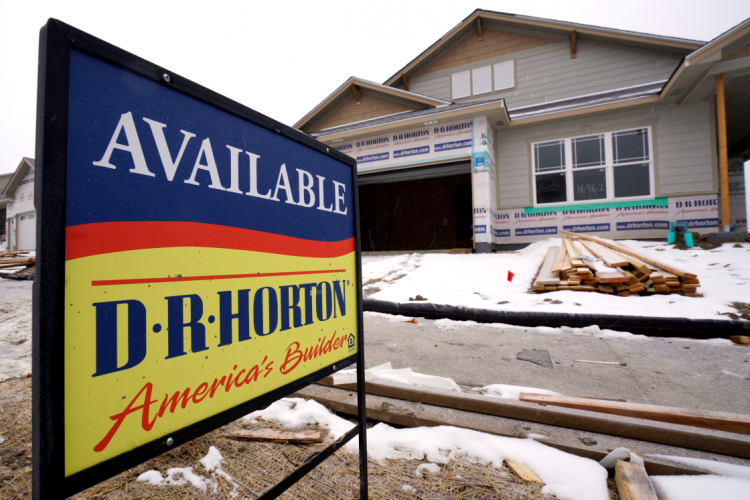US homebuilding experienced a significant surge in February, with builders anticipating strong demand for new homes to persist. According to data released by the Census Bureau and the Department of Housing and Urban Development, housing starts soared by 10.7% last month, reaching a seasonally adjusted annual rate of 1.521 million units, surpassing analysts' estimates of 1.425 million.
Single-family housing starts, which account for the majority of homebuilding, saw a particularly sharp rebound, jumping 11.6% to a rate of 1.129 million units, the highest level since April 2022. This surge was driven by mild temperatures and a persistent shortage of previously owned houses on the market. Despite the challenges posed by higher mortgage rates, builders are employing strategies such as price cuts and incentives to attract buyers.
"Single-family starts could remain strong in the next couple of months as builders continue to see demand for new builds despite the headwinds facing buyers," said Daniel Vielhaber, an economist at Nationwide. "Rate incentives from builders continue to help buyers afford homes on the new side of the market."
The housing market has been grappling with the impact of aggressive rate hikes by the Federal Reserve, which has been battling inflation. However, homebuilding has been supported by an acute housing shortage, with most homeowners locked into lower mortgage rates. Recent government data revealed that there were only 757,000 housing units for sale in the fourth quarter, well below the pre-pandemic level of 1.145 million units.
Homebuilder confidence has also been on the rise, with a survey from the National Association of Home Builders showing that sentiment among single-family homebuilders reached an eight-month high in March. This optimism is fueled by expectations of sales growth both now and over the coming six months.
As mortgage rates have retreated from their recent highs, hovering around 6.74% after nearly reaching 7% in late February, prospective homebuyers are finding some builders offering concessions, upgrades, or favorable financing terms. However, according to the NAHB, fewer builders are resorting to price cuts.
"Lower mortgage rates are likely to bring buyers to the market in larger numbers, and builders are ramping up supply to meet this demand," said Kelly Mangold of RCLCO Real Estate Consulting.
The housing shortage and affordability crisis have also caught the attention of the White House, with President Joe Biden set to address the issue in a speech from Las Vegas. The administration is calling on Congress to pass legislation that could result in the building and renovation of more than 2 million homes to close the housing supply gap and lower housing costs.
Housing experts agree that there is a significant shortfall in the number of homes available for rent or purchase compared to the demand. Estimates of the size of this gap vary, ranging from 1.5 million units according to the National Association of Home Builders to as high as 7 million units according to the National Low Income Housing Coalition and Realtor.com.
In addition to the surge in single-family housing starts, permits for future construction of single-family units also rose to more than a 1-1/2-year high in February. With mortgage rates gradually trending lower on expectations that the Federal Reserve will start cutting interest rates by June, homebuilding could contribute positively to economic growth this year.
As builders navigate the challenges posed by higher material costs, they are also adapting by reducing the size of the homes being built. The completions rate for single-family housing surged 20.2% to 1.072 million units in February, the highest level since November 2022, providing a much-needed boost to supply and potentially easing pressure on house prices and rental inflation.






